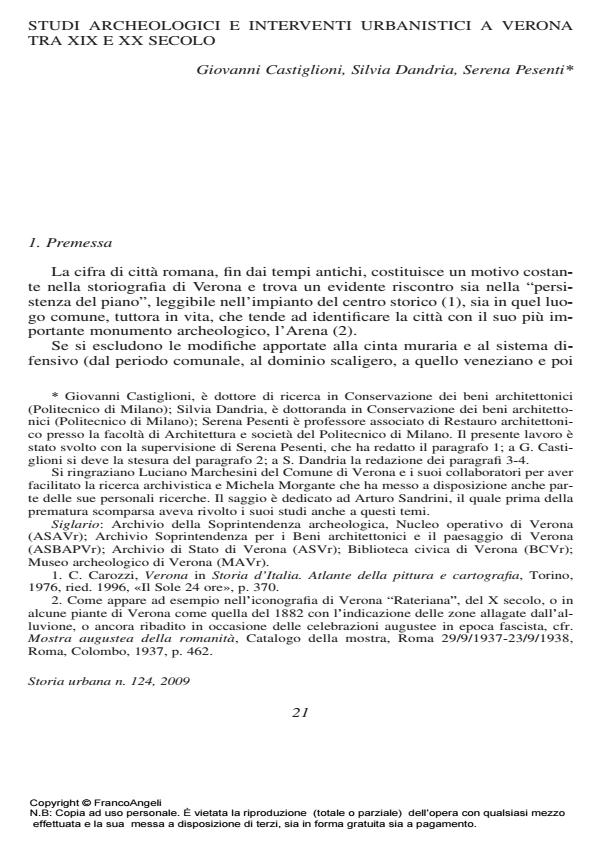Studi archeologici e interventi urbanistici a Verona tra XIX e XX secolo
Titolo Rivista STORIA URBANA
Autori/Curatori Giovanni Castiglioni, Silvia Dandria, Serena Pesenti
Anno di pubblicazione 2010 Fascicolo 2009/124
Lingua Italiano Numero pagine 42 P. 21-61 Dimensione file 9587 KB
DOI 10.3280/SU2009-124002
Il DOI è il codice a barre della proprietà intellettuale: per saperne di più
clicca qui
Qui sotto puoi vedere in anteprima la prima pagina di questo articolo.
Se questo articolo ti interessa, lo puoi acquistare (e scaricare in formato pdf) seguendo le facili indicazioni per acquistare il download credit. Acquista Download Credits per scaricare questo Articolo in formato PDF

FrancoAngeli è membro della Publishers International Linking Association, Inc (PILA)associazione indipendente e non profit per facilitare (attraverso i servizi tecnologici implementati da CrossRef.org) l’accesso degli studiosi ai contenuti digitali nelle pubblicazioni professionali e scientifiche
Archaeological studies and urban interventions in Verona between 19th and 20th century - Verona, Arena, Roman theatre, urban planning Over the centuries, the city of Verona has been characterized by the original foundations plan from the Roman era. Urban planning in the 19th and 20th centuries was in fluenced by the framework of the streets based on an orthogonal grid, the walls, with their system of urban gates for access to the city, and the imposing presence of the Arena. In the 19th century, a renewed attention to Roman monuments and restoration involved interventions on the surrounding urban environment. This meant that the amphitheatre became the fulcrum of architectural projects for the new city center, Piazza Bra, with its new monumental buildings. On the other side of the city, where monumental ruins of the Roman theatre were discovered buried below the city itself, an entire hillfront was transformed into an archeological park. Additionally, in the first half of the 20th century the "traces" of Roman Verona were listed among the principal references for the adaptation of the historical city center in the planning of the contemporary expanding city. After the Second World War, reconstruction plans tried to modernize the city and, at the same time, keep the historic urban structure. This choice was confirmed, according to the Superintendence, in the reconstruction of the intra moenia areas which - as they thought - should relate to environmental aspects. In this way, it has been possible, in spite of all the changes, to keep the traditional features of the city.
Giovanni Castiglioni, Silvia Dandria, Serena Pesenti, Studi archeologici e interventi urbanistici a Verona tra XIX e XX secolo in "STORIA URBANA " 124/2009, pp 21-61, DOI: 10.3280/SU2009-124002